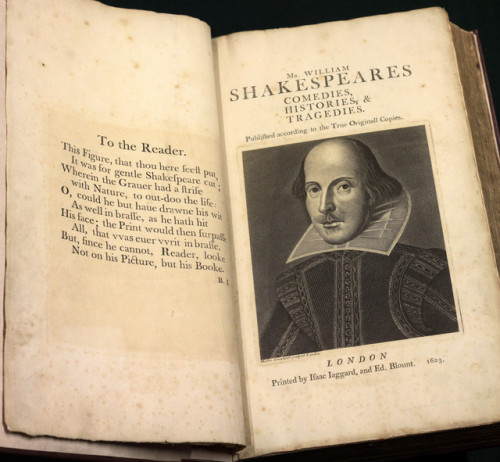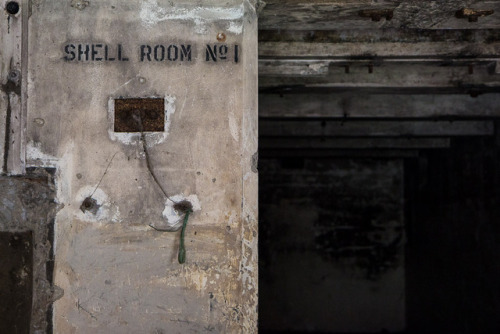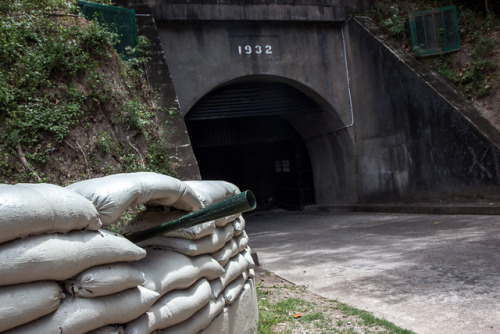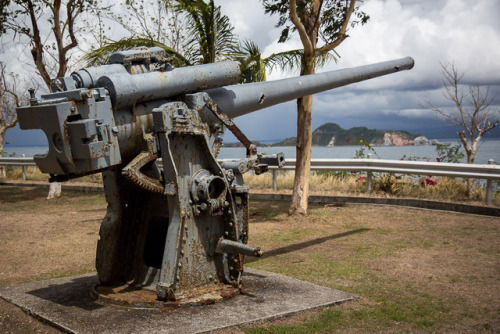Knowing The 20 Amino Acids Is Definitely A MUST For The 2015 MCAT



Knowing the 20 Amino Acids is definitely a MUST for the 2015 MCAT
Amino acids that are usually negative (i.e. de-protonated) at physiological pH:
- Glutamate (E) Glu, and Aspartate (D) Asp
Amino acids that are usually positive (i.e. protonated) at physiological pH:
- Lysine (K) Lye, Arginine ® Arg
Histidine is sometimes charged at physiological pH.
physiological pH = 7, Neutral
More Posts from Philosophical-amoeba and Others
Complex learning dismantles barriers in the brain
Biology lessons teach us that the brain is divided into separate areas, each of which processes a specific sense. But findings published in eLife show we can supercharge it to be more flexible.

Scientists at the Jagiellonian University in Poland taught Braille to sighted individuals and found that learning such a complex tactile task activates the visual cortex, when you’d only expect it to activate the tactile one.
“The textbooks tell us that the visual cortex processes visual tasks while the tactile cortex, called the somatosensory cortex, processes tasks related to touch,” says lead author Marcin Szwed from Jagiellonian University.
“Our findings tear up that view, showing we can establish new connections if we undertake a complex enough task and are given long enough to learn it.”
The findings could have implications for our power to bend different sections of the brain to our will by learning other demanding skills, such as playing a musical instrument or learning to drive. The flexibility occurs because the brain overcomes the normal division of labour and establishes new connections to boost its power.
It was already known that the brain can reorganize after a massive injury or as a result of massive sensory deprivation such as blindness. The visual cortex of the blind, deprived of its input, adapts for other tasks such as speech, memory, and reading Braille by touch. There has been speculation that this might also be possible in the normal, adult brain, but there has been no conclusive evidence.
“For the first time we’re able to show that large-scale reorganization is a viable mechanism that the sighted, adult brain is able to recruit when it is sufficiently challenged,” says Szwed.
Over nine months, 29 volunteers were taught to read Braille while blindfolded. They achieved reading speeds of between 0 and 17 words per minute. Before and after the course, they took part in a functional Magnetic Resonance Imaging (fMRI) experiment to test the impact of their learning on regions of the brain. This revealed that following the course, areas of the visual cortex, particularly the Visual Word Form Area, were activated and that connections with the tactile cortex were established.
In an additional experiment using transcranial magnetic stimulation, scientists applied magnetic field from a coil to selectively suppress the Visual Word Form Area in the brains of nine volunteers. This impaired their ability to read Braille, confirming the role of this site for the task. The results also discount the hypothesis that the visual cortex could have just been activated because volunteers used their imaginations to picture Braille dots.
“We are all capable of retuning our brains if we’re prepared to put the work in,” says Szwed.
He asserts that the findings call for a reassessment of our view of the functional organization of the human brain, which is more flexible than the brains of other primates.
“The extra flexibility that we have uncovered might be one those features that made us human, and allowed us to create a sophisticated culture, with pianos and Braille alphabet,” he says.
When my alcoholic uncle died - and how it impacted my life as a nurse
A recent post from another nurse was so beautifully honest and vulnerable that it made me lose my snark and just get human for a minute. So I will share an experience and I have permission from all involved. I had an uncle who was a terrible alcoholic. It ravaged every aspect of his life, his work as a union tradesman, his ability to be a father or husband and his relationships with his brothers and sisters. My mom and I often visited him when he’d get admitted to the floor. I could never bear to see him in the ER. Dirty, belligerent, withdrawing in the DTs. I was embarrassed because I knew he was a frequent flier. I was embarrassed that I was embarrassed. We tried to drop him groceries and buy his Dilantin every month, but he moved around a lot, mostly renting rooms above taverns. He wanted nothing to do with sobriety. He used drugs when he could, but whiskey was his poison. In the end he only tolerated a few beers a day to keep away the shakes. To any nurse or medic or doc who new him he was a local drunk, but to me he was my uncle. I knew him as a kind loving man as well. I remember family BBQs and him tossing me up in the air as a kid. I remember him showing up drunk to thanksgiving and not making it out out of the car before passing out. I remember the disappointment in my family’s faces. I remember the shame in his eyes. I remember driving around his neighborhood looking at the entrances of taverns to see if he was passed out. I wondered if anyone would know to call us if he died. I wondered if he even had any I.D. But they did call. And I knew when I saw him at age 55 in the ICU Weighing 90 lbs dying of Hep C and esophageal CA that he didn’t have a lot of time left. I was a nursing student and an ER tech but I knew in my heart this time was different. I saw people fear him. I saw nurses treat him as if he was a leper. One yelled at him to be still while she gave him a shot of heparin and he grimaced in pain. Nurses came in one by one to start a heplock and he grimaced in pain. Despite knowing better after the 4th nurse was unsuccessful I begged them to stop and give him a break. My hospital I worked accepted him into impatient hospice. I was relieved. When he arrived I saw the 2 EMTs toss him on the hospice bed and walk out without saying a word while he grimaced in pain. They probably got held over and he probably didn’t seem like an urgent transport. They didn’t want to touch him. I didn’t say anything. I was scared to touch him too. He was emaciated with a huge head and a gaunt appearance. I wondered if he had AIDS. I felt bad for thinking that. I still kissed his forehead and told him he was going to be okay. Because I loved him. He was my family. And then I saw nurses treat him with kindness. I saw the beauty of a non judgemental hospice team make his last 96 hours on Earth a time where he could make peace with his demons. I saw Roxy drops for the first time and I saw him get some relief from the pain of untreated cancer, from the pain of dying. I saw them allow me break the rules and lift his frail body into a wheelchair, fashion an old fashioned posey to hold him up and take him down stairs for his last cigarette on Route 30. I was able to spend my breaks with him. I got to suction him and help give him a bed bath. I got off my 3-11 shift and spend a few hours with him watching a baseball game on replay. I sat with him in silence and I held his hand. I finally knew what people meant when they said the dying watch their life play out in their minds. I swear I could see it happening. I asked him if he was thinking about things he said “yep”. I asked him if he wanted me to stay or go and he said “stay”. So I stayed. I heard the death rattle for the first time. I cried to a veteran hospice nurse and she explained how the Scopolamine patch would help. I finally felt what it was like to be helpless to a family member in need and her words of comfort and years of experience meant everything to me. She said he probably had 48 hours at the most. I read “Gone from my sight” the blue book of hospice by Barbara Karnes. The whole family trickled in. His kids, all his brothers and sisters and nieces and nephews. His children told him they loved him and they forgave him. We kissed his forehead and washed his hair. My mother shaved his face. His daughter said words of kindness that relieved him of any guilt or regret. I saw this beautiful cousin of mine watch me suction him and she asked how I could be so calm and so strong. I didn’t feel strong or knowledgeable but when you are the “medical person” in the family they see things in you that you didn’t know you had. We surrounded him with love and light and he died surrounded by everyone who ever meant anything to him. The nurses even cried. I got to see the dying process for what it was. It was beautiful and at the same time so humbling it brought me to my knees. I have never forgotten that feeling and I pray I never do. Is alcoholism a disease? We debate it as health care providers and wonder about the others whose lives have been impacted by the actions of an alcoholic. The amends that never got made. I guess I don’t care if it’s a disease, a condition, or a lifetime of conscious choices and poor judgement. In the end it’s a human being, usually a dirty foul smelling human being with missing teeth who may or may not be soiled in urine and vomit. Sometimes kicking, hurling obscenities, racial slurs, or spitting. Often doing all of the above at once. It’s hard to empathize with a human being who arrives packaged up that way. It’s hard to care or to want to go above and beyond. And I don’t think you should ever feel guilty if you don’t have those feelings. That is okay. It’s natural to wonder about the damage these people may have done to others. Wonder how many lives they might have ravaged. Please don’t take their pain as your own. At least try not to. It is not your pain to carry. And we all know that is easier said than done. But please, Treat them with dignity. They feel. They hear you. Give them the care you know you are capable of giving. I can tell you I hold a special place in my heart for every nurse who touched my uncle with a gentle hand. Who cleaned him for the fifth time when he was vomiting stool. Who asked him to smile. Who smiled back at him. Who stroked his forehead and put a cool washcloth on it. I am eternally grateful for anyone that saw beyond his alcoholism and saw a person. A human. A child of God (if you believe in God). A father. A son. An uncle. And I believe in my heart he felt the same way, even if he didn’t or couldn’t say it. If you have that patient. That difficult, hard to like, dreadful patient. Don’t think you have to love them or even like them. You don’t. But if you can preserve their dignity and show them the kind of nursing care that anyone would deserve, than you are good. You are the reason we are the world’s most trusted profession. And even though you don’t know it, someone saw and felt it, and it meant the world to them. Go to bed and sleep soundly because you deserve that. - J.R. RN


Comedies Histories Tragedies
Mr William Shakespeare
London Iaggard and Blount 1623
Textual reprint of the First Folio published by J Wright 1807





Corregidor Island, a small island at the entrance to Manila Bay. It is an important strategic point – whoever controls the island, controls Manila. And with it the Philippines. Since the Spanish first built a base on the island in 1570, Corregidor has been captured, and held, by the Dutch, the British, the Americans, the Japanese, and the Americans again.
It was taken in May 1942 by Japanese forces after months of near-constant bombardment. Corregidor marked the fall of the Philippines to the Japanese Empire. When American forces retook Corregidor in February 1945, it was another marker of the long, slow, and inexorable island-hopping campaign to push the Japanese back into Japan. That 1945 battle was the last action that Corregidor saw.
Today, it is an open-air museum. All across Corregidor are the ruins of the World War II military base, with bomb-ravaged buildings left as they were and many large guns still in place.

“The Mouse chirpeth… The Duck quaketh… The Wolf howleth” — from the very first picture book for children, published in 1658: http://buff.ly/2l6FaBH
In a recent video, Practical Engineering tackles an important and often-overlooked challenge in civil engineering: dam failure. At its simplest, a levee or dam is a wall built to hold back water, and the higher that water is, the greater the pressure at its base. That pressure can drive water to seep between the grains of soil beneath the dam. As you can see in the demo below, seeping water can take a curving path through the soil beneath a dam in order to get to the other side. When too much water makes it into the soil, it pushes grains apart and makes them slip easily; this is known as liquefaction. As the name suggests, the sediment begins behaving like a fluid, quickly leading to a complete failure of the dam as its foundation flows away. With older infrastructure and increased flooding from extreme weather events, this is a serious problem facing many communities. (Video and image credit: Practical Engineering)


The hairstyle of this small girl, cut short and topped with a ribbon bow, seems to date this advertisement from the early 1950s. The printer is believed to be Whitcombe & Tombs, because the poster came to the Library with other material printed by that company.
[Whitcombe & Tombs Ltd?] :Goodness! that’s tempting. Weet-bix [ca 1954?]
Eph-C-FOOD-Whitcombe-2-03
Toward an Irish Republic

Ireland lived under England’s rule for almost four centuries. The Irish fought against this occupation through the press, through literature, in politics, and in the streets. They could not, however, create a united front of protesters because they were divided among themselves and struggled with their national identity.
Toward an Irish Republic focuses on the political progress made between the fifteenth and twentieth centuries, as well as the Irish literary revival that occurred at the turn of the nineteenth century.
Driven by Ireland’s desire to build a separate identity from Britain, a distinct Irish literature began to emerge. The establishment of modern Irish literature contributed to the unification of the Irish. They explored their Gaelic roots, searching for stories of characters with the tenacity for which the Irish are now famous. Many Irish men and women also taught themselves the Gaelic language and read folklore. For example, Lady Sydney Morgan, in her novel The Wild Irish Girl (1806), wrote of a young Englishman who travels through Ireland and discovers its history and culture. Standish O’Grady retold Gaelic folktales and historical stories, such as “Birth of King Cormac” and “Teigue Mac Cein’s Adventure”, in his book Silva Gadelica (1892).
One of the greatest points of contention between the Irish and English was their denominational divide. The majority of people in Ireland identified themselves as Catholic, whereas the majority of the people in England were Protestants. The English, strongly opposed to Catholicism since Henry VIII broke away from the Roman Catholic Church, discouraged the Irish from practicing Catholicism. An early example of the political upheaval in Ireland is A Collection of Certain Horrid Murthers in the Several Counties of Ireland. Printed in 1679, this book lists Protestants that were killed during the Irish Rebellion of 1641 when Irish Catholics attempted to gain religious freedom.
Britain’s laws against Catholicism began to weaken by the end of the eighteenth century. In 1792, Theobald Wolfe Tone, one of the leaders of the United Irishmen, put forth his defense for Catholics to gain religious freedom in An Argument on Behalf of the Catholics of Ireland (1792). Many arguments for and against this issue were made, but it was not until 1829 that Catholics were emancipated, with the passage of the Roman Catholic Relief Act.
In 1921, a large portion of Ireland was able to gain independence. The Irish Free State, now known as the Republic of Ireland, was the result of these nationalist movements.
Bibliography
A Collection of Certain Horrid Murthers in the Several Counties of Ireland. London: Printed for Henry Brome, 1679. X 941.506 C685
Theobald Wolfe Tone. An argument on behalf of the Catholics of Ireland. Dublin: The United Irishmen, 1792. 320.9415 T61a5
Standish H. O’Grady. Silva Gadelica (I.-XXXI.): a Collection of Tales in Irish. London: Williams and Norgate, 1892. 891.6208 Og7s
Lady Sydney Morgan. The Wild Irish Girl. London: Printed for Richard Phillips, 1806. 823 M823W 1806
-
 babygirlpoppy liked this · 2 years ago
babygirlpoppy liked this · 2 years ago -
 princessnefertankh liked this · 3 years ago
princessnefertankh liked this · 3 years ago -
 de-vitabeata reblogged this · 4 years ago
de-vitabeata reblogged this · 4 years ago -
 babygirlpoppy reblogged this · 4 years ago
babygirlpoppy reblogged this · 4 years ago -
 heartof3sal reblogged this · 5 years ago
heartof3sal reblogged this · 5 years ago -
 starscolliiide liked this · 5 years ago
starscolliiide liked this · 5 years ago -
 joyoya reblogged this · 5 years ago
joyoya reblogged this · 5 years ago -
 studyingfluff reblogged this · 5 years ago
studyingfluff reblogged this · 5 years ago -
 lifeofabme liked this · 5 years ago
lifeofabme liked this · 5 years ago -
 navikite-blog liked this · 5 years ago
navikite-blog liked this · 5 years ago -
 hongos-estudiosos reblogged this · 5 years ago
hongos-estudiosos reblogged this · 5 years ago -
 wh0else liked this · 5 years ago
wh0else liked this · 5 years ago -
 futuredrmedic reblogged this · 5 years ago
futuredrmedic reblogged this · 5 years ago -
 clearintheair liked this · 5 years ago
clearintheair liked this · 5 years ago -
 itsthepremedprincess reblogged this · 6 years ago
itsthepremedprincess reblogged this · 6 years ago -
 ffunction reblogged this · 6 years ago
ffunction reblogged this · 6 years ago -
 ffunction liked this · 6 years ago
ffunction liked this · 6 years ago -
 llucyinautumn liked this · 6 years ago
llucyinautumn liked this · 6 years ago -
 sunshinenstudies-blog reblogged this · 6 years ago
sunshinenstudies-blog reblogged this · 6 years ago -
 shanstudies reblogged this · 6 years ago
shanstudies reblogged this · 6 years ago -
 perniciousoccult reblogged this · 6 years ago
perniciousoccult reblogged this · 6 years ago -
 wildlflowers reblogged this · 6 years ago
wildlflowers reblogged this · 6 years ago -
 studyties liked this · 6 years ago
studyties liked this · 6 years ago -
 studyingraccoon reblogged this · 6 years ago
studyingraccoon reblogged this · 6 years ago -
 studyboss-blog1 liked this · 6 years ago
studyboss-blog1 liked this · 6 years ago -
 miloticthatch reblogged this · 6 years ago
miloticthatch reblogged this · 6 years ago -
 casclapscheeks reblogged this · 6 years ago
casclapscheeks reblogged this · 6 years ago -
 casclapscheeks liked this · 6 years ago
casclapscheeks liked this · 6 years ago -
 gummyhero6 liked this · 6 years ago
gummyhero6 liked this · 6 years ago
A reblog of nerdy and quirky stuff that pique my interest.
291 posts
